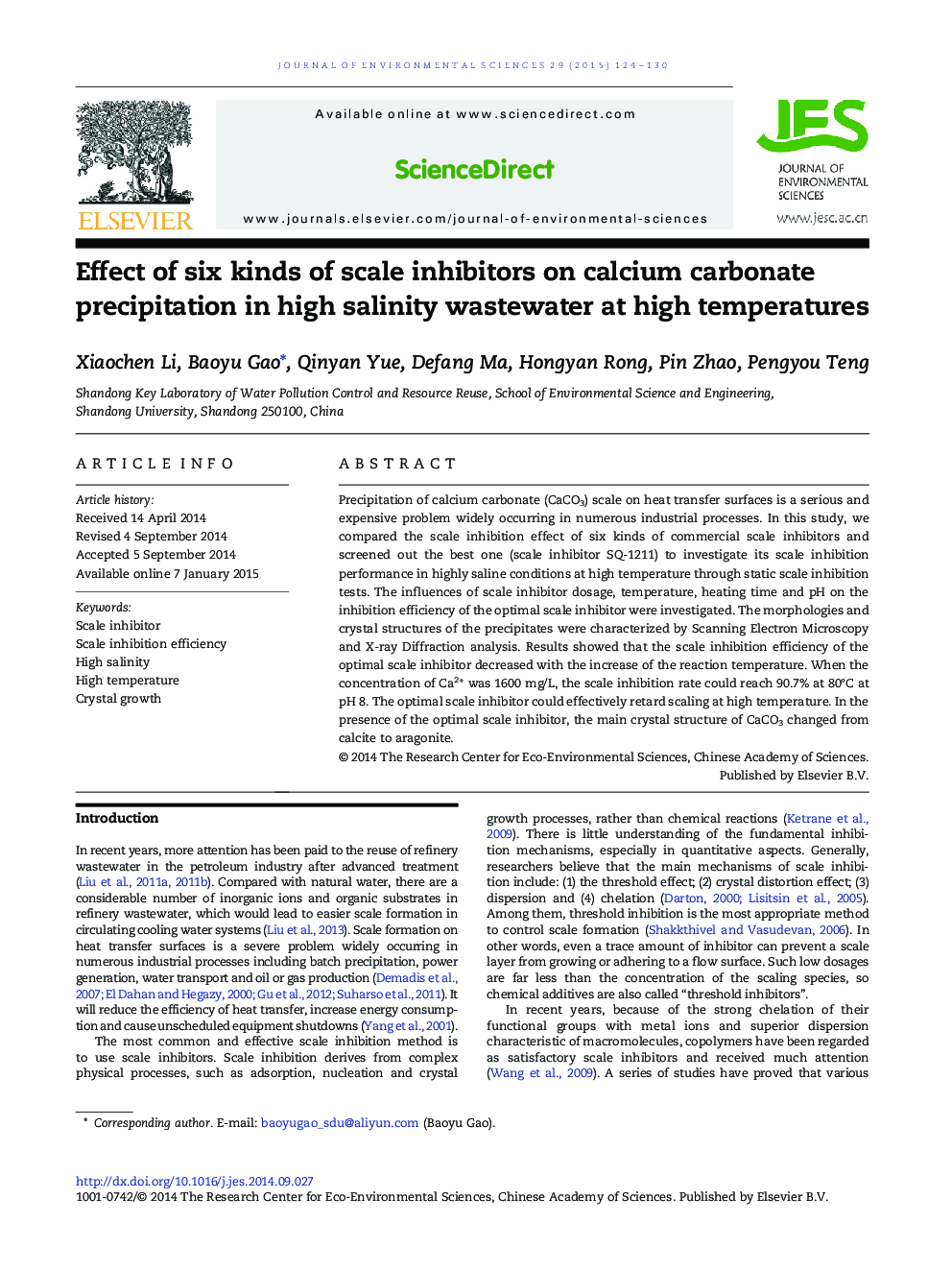| Article ID | Journal | Published Year | Pages | File Type |
|---|---|---|---|---|
| 4454216 | Journal of Environmental Sciences | 2015 | 7 Pages |
Precipitation of calcium carbonate (CaCO3) scale on heat transfer surfaces is a serious and expensive problem widely occurring in numerous industrial processes. In this study, we compared the scale inhibition effect of six kinds of commercial scale inhibitors and screened out the best one (scale inhibitor SQ-1211) to investigate its scale inhibition performance in highly saline conditions at high temperature through static scale inhibition tests. The influences of scale inhibitor dosage, temperature, heating time and pH on the inhibition efficiency of the optimal scale inhibitor were investigated. The morphologies and crystal structures of the precipitates were characterized by Scanning Electron Microscopy and X-ray Diffraction analysis. Results showed that the scale inhibition efficiency of the optimal scale inhibitor decreased with the increase of the reaction temperature. When the concentration of Ca2 + was 1600 mg/L, the scale inhibition rate could reach 90.7% at 80°C at pH 8. The optimal scale inhibitor could effectively retard scaling at high temperature. In the presence of the optimal scale inhibitor, the main crystal structure of CaCO3 changed from calcite to aragonite.
